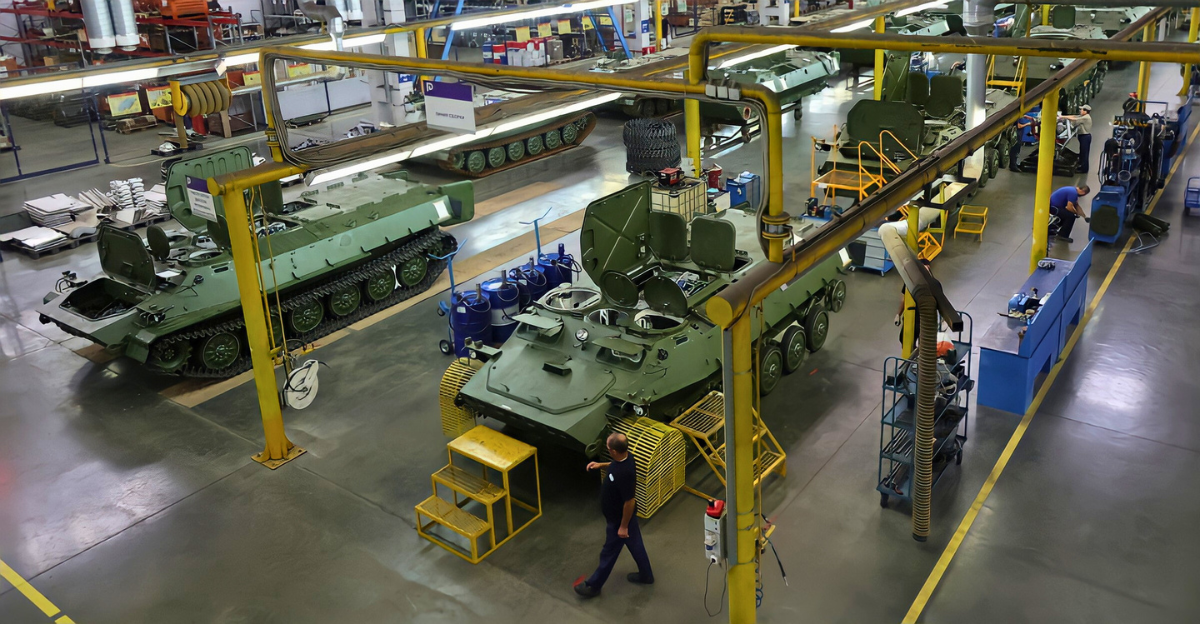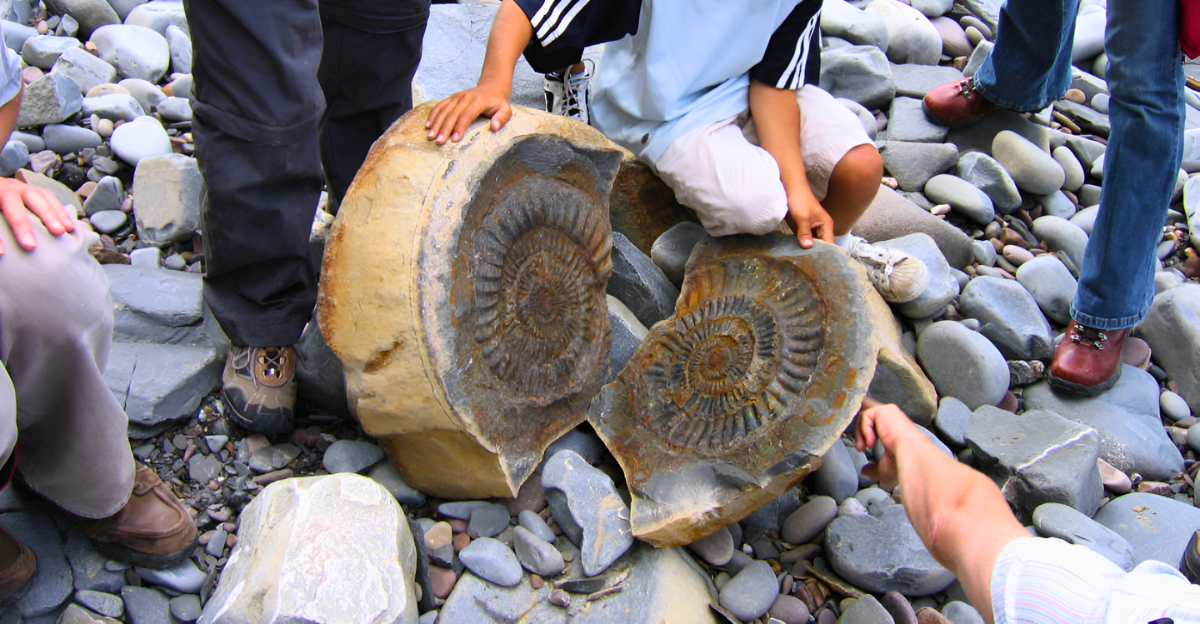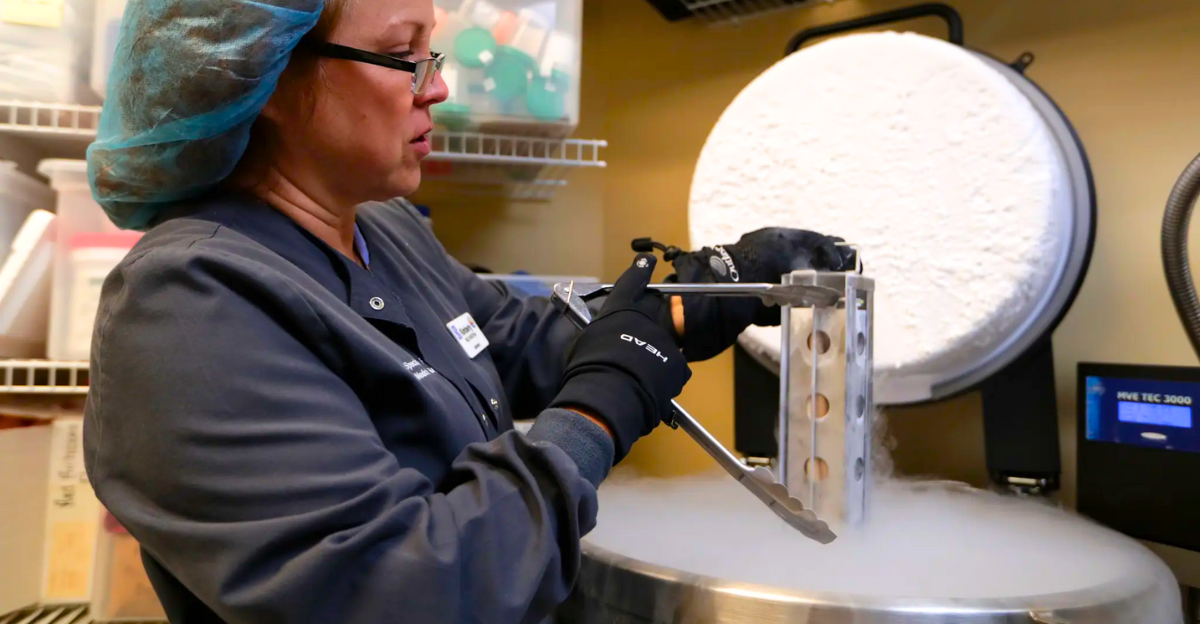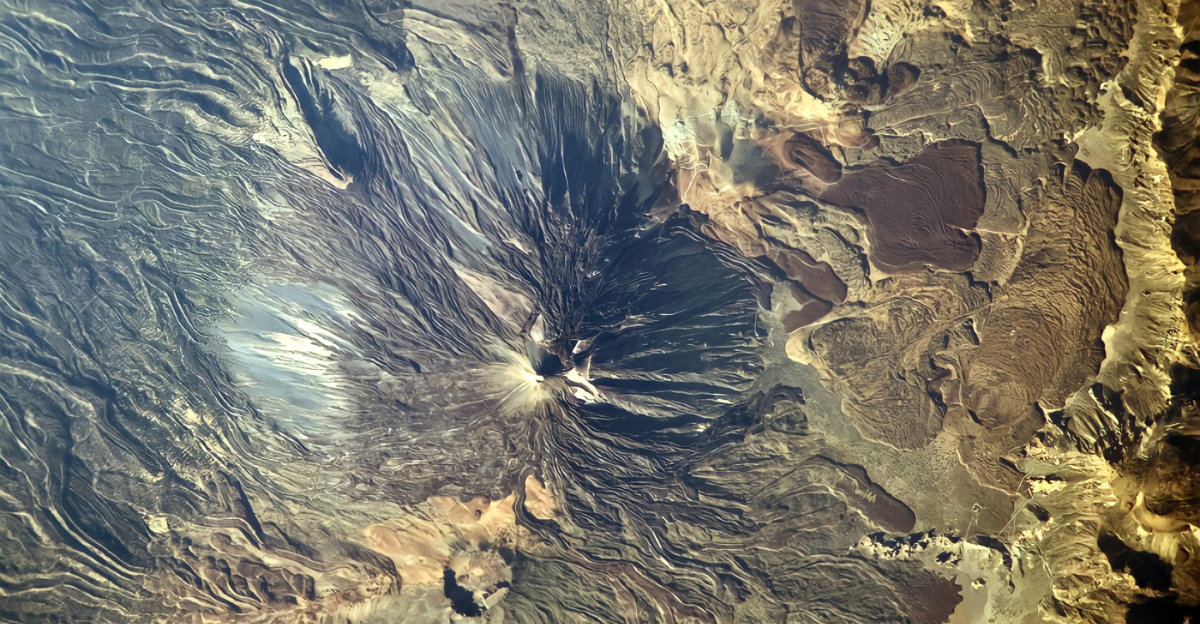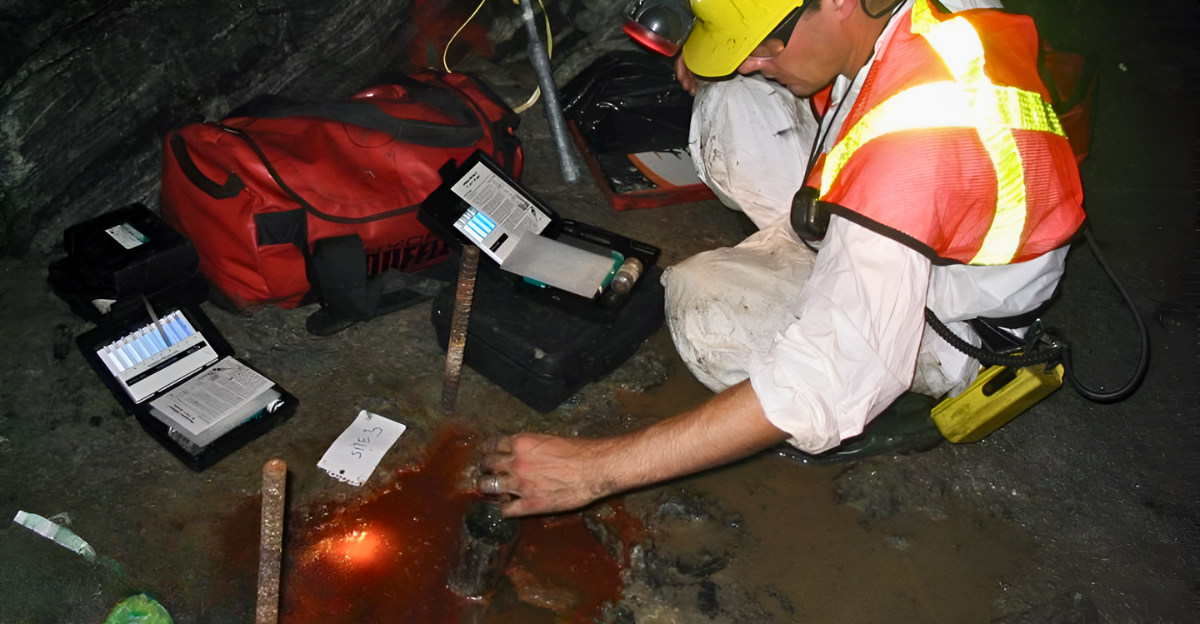
In 2015, deep beneath the ancient Pyramid of the Feathered Serpent in Teotihuacan, Mexico, archaeologist Sergio Gómez uncovered something no one expected: shimmering pools of an unidentifiable liquid sealed away in darkness for nearly 2,000 years.
It wasn’t just eerie, it was baffling. What was it? And why was it kept so secret?
Liquid Mercury Found Deep Beneath Teotihuacan
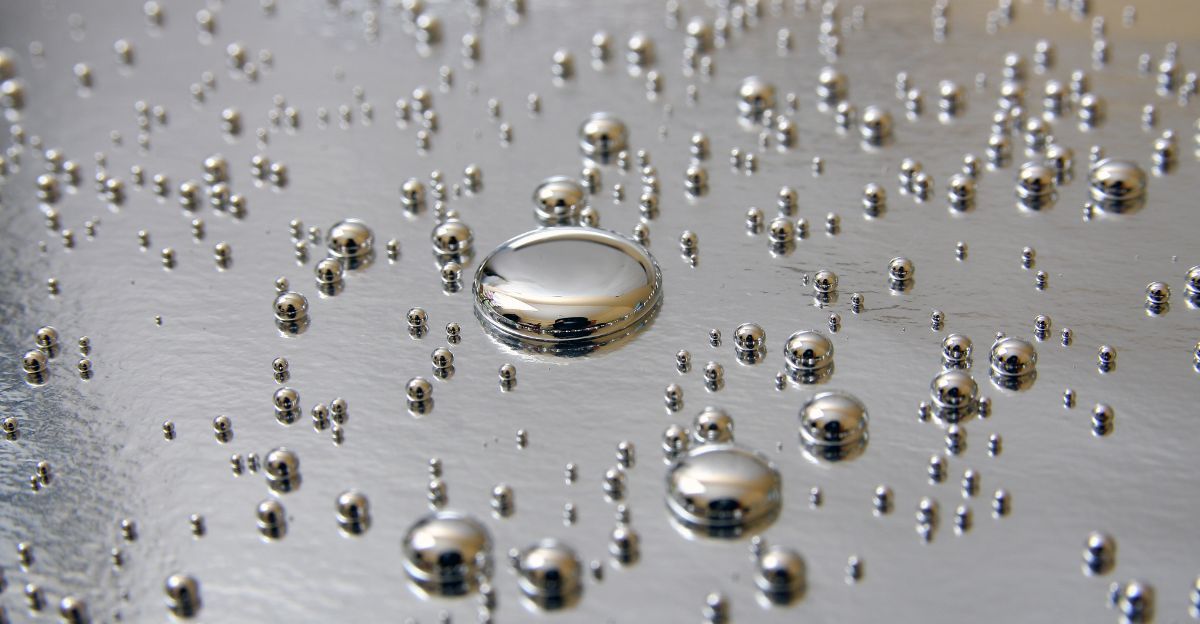
Deep within a sealed tunnel, Sergio Gómez and his team stumbled upon something straight out of an archaeological thriller … shimmering pools of actual liquid mercury, glinting in the shadows like a warning.
This wasn’t a metaphor or ceremonial replica; it was the real thing. Pure, toxic mercury is a heavy metal so dangerous that it can vaporise at room temperature and wreak havoc on the human brain and nervous system.
From Red Ore to Liquid Gold
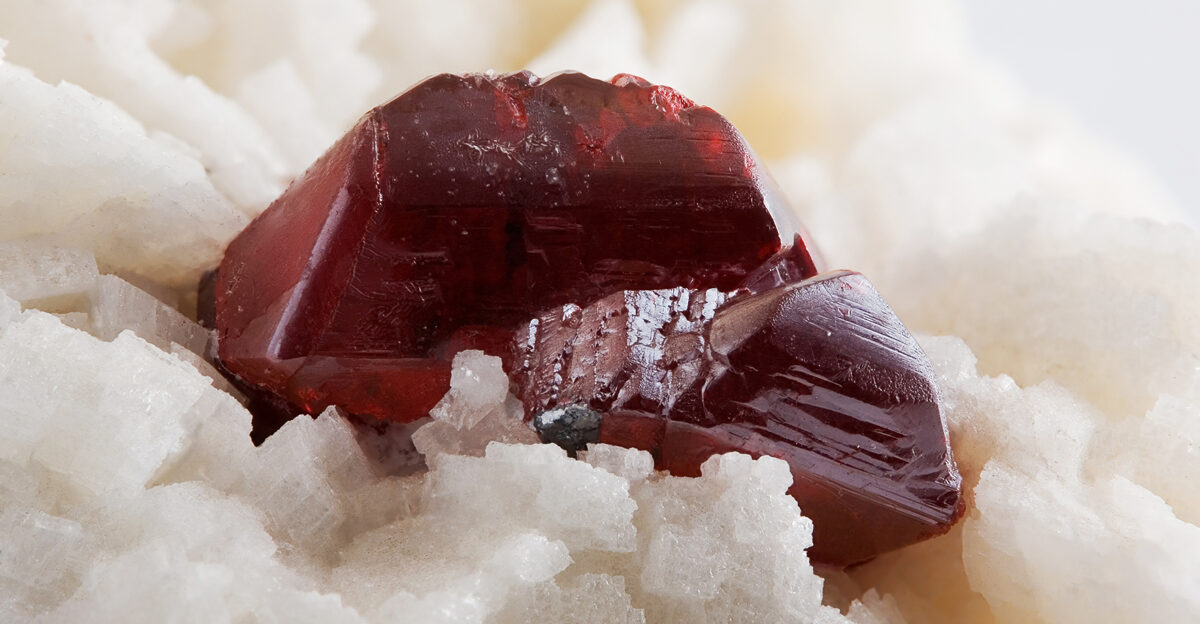
Mercury doesn’t just magically appear in liquid form. It must be painstakingly extracted from cinnabar, a vivid red mineral found in only a few regions of Mexico. The process? Brutal. Cinnabar has to be crushed, then superheated to release mercury vapour, spewing out toxic fumes capable of killing anyone nearby.
Yet nearly 2,000 years ago, the people of Teotihuacan not only knew where to find this rare substance, they knew exactly how to harvest it.
The Tunnel Was Sealed For Nearly 1,800 Years
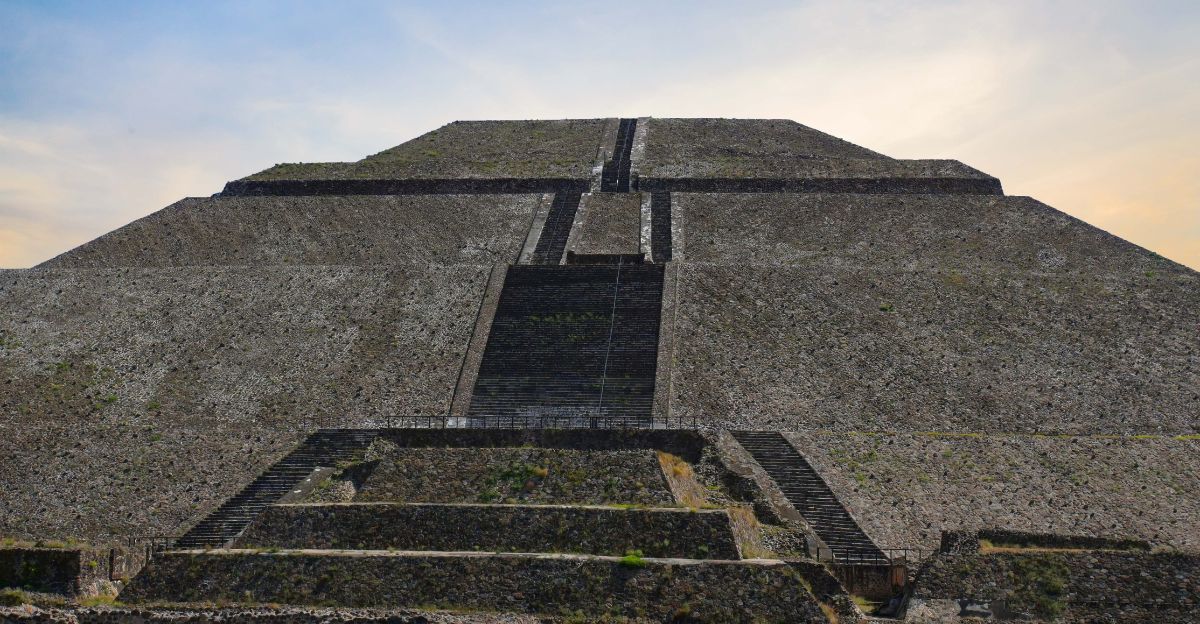
The entrance to the tunnel beneath the pyramid was discovered in 2003, but it would take more than a decade of excavation before researchers finally reached the mysterious mercury chamber in 2015. This wasn’t a collapsed passage or a victim of time; it had been deliberately filled and sealed by the original builders, stone by stone, as if hiding something meant to stay buried.
Why? That question still puzzles archaeologists. Some believe it was part of a sacred ritual, a final “closing” of a spiritual gateway. Others think it was an act of protection … or perhaps concealment.
Tlaloc II-TC
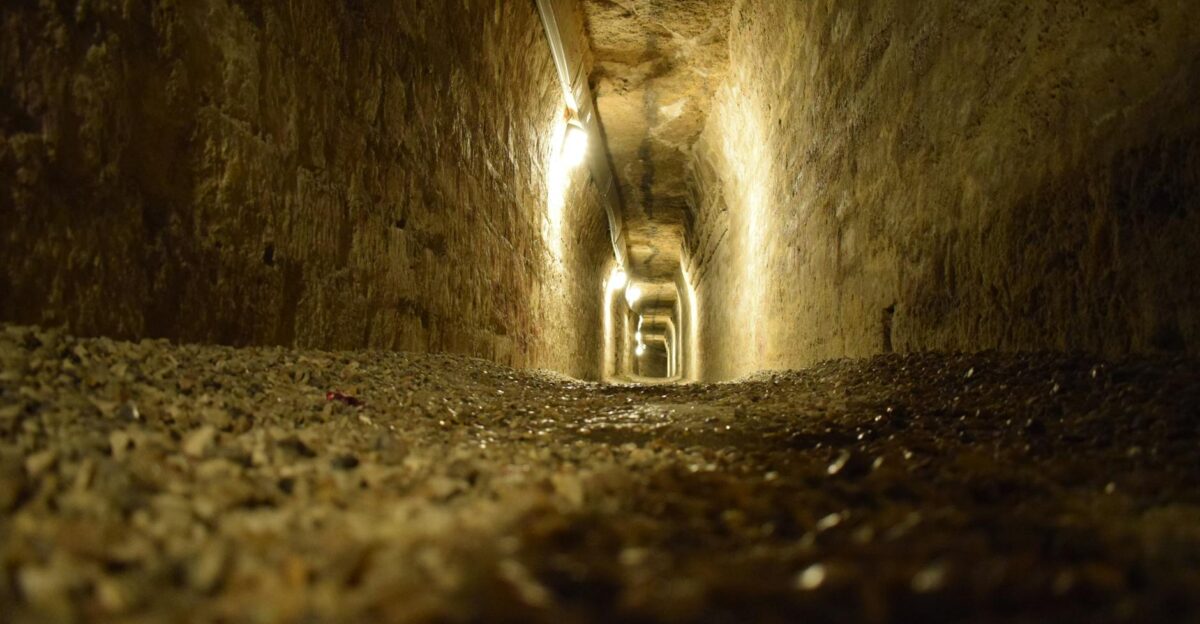
The tunnel was too tight and unstable for anyone to enter the dark, claustrophobic passage that had been sealed for centuries. So scientists sent in a mechanical explorer: Tlaloc II-TC, a small robot named after the ancient rain god. What it uncovered was nothing short of astonishing: three hidden chambers, perfectly sealed and undisturbed for nearly 2,000 years.
They weren’t just empty rooms. They were time capsules, echoing with the silence of a lost civilization and secrets long buried in the dark.
No Body … Just Artifacts
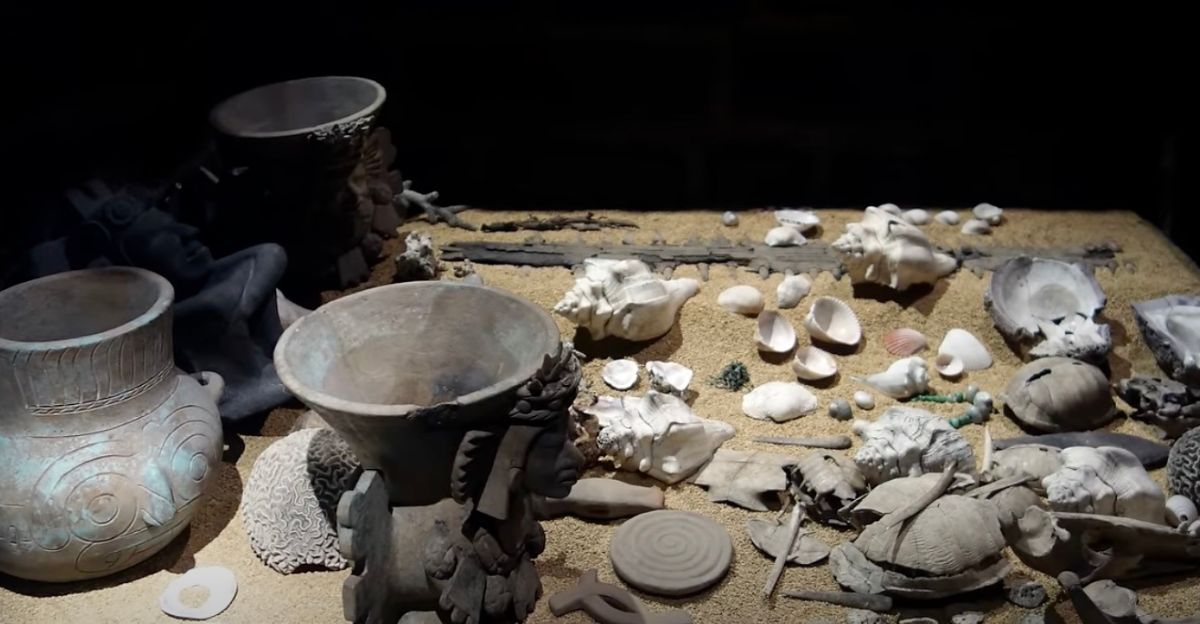
Many believed the tunnel would lead to a royal tomb. Teotihuacan was a massive city, even bigger than ancient Rome at its peak, but no ruler’s burial site has ever been found. Instead of a body, archaeologists uncovered more than 50,000 objects: jade statues, sharp obsidian blades, seashells, necklaces, and rubber balls once used in ceremonial games.
It was clear this was a special place, used for important rituals. But one big question remains: Who was it all for? The person or purpose behind this mysterious chamber is still unknown.
Glimmering Pyrite Walls
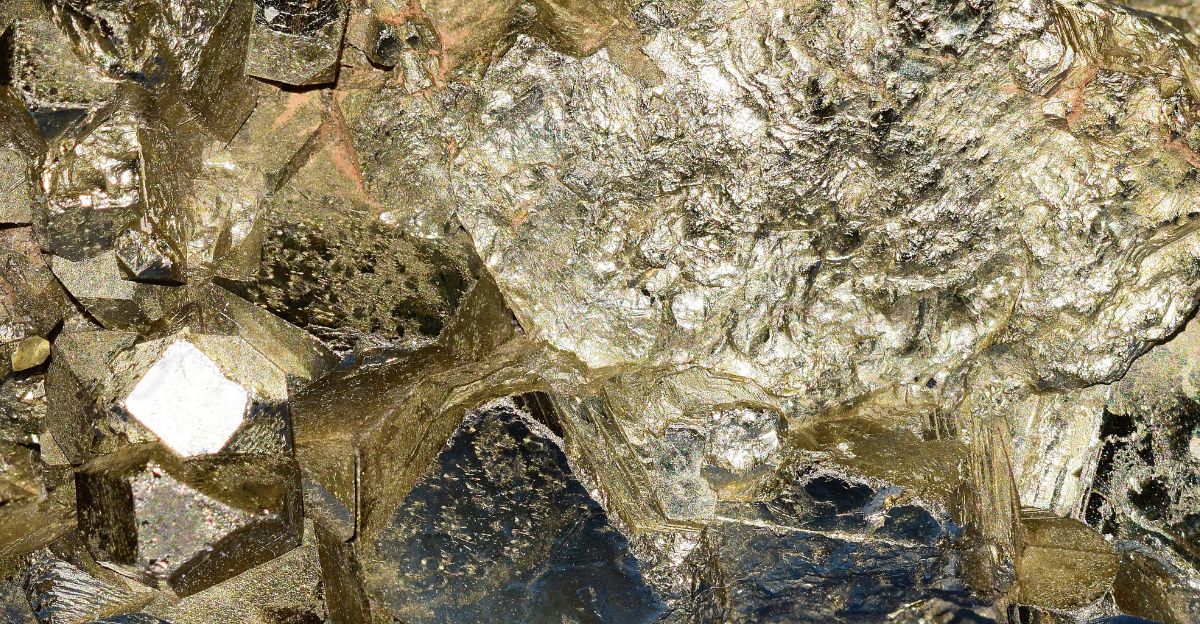
Parts of the tunnel were lined with crushed pyrite, also known as “fool’s gold.” When lit by torches, the walls would have sparkled like stars, turning the narrow passage into a glittering path through darkness. Some experts believe this wasn’t just decoration, it was deeply symbolic.
The shimmering tunnel may have represented a voyage through the cosmos or a sacred path into the spirit world.
Rivers of the Underworld
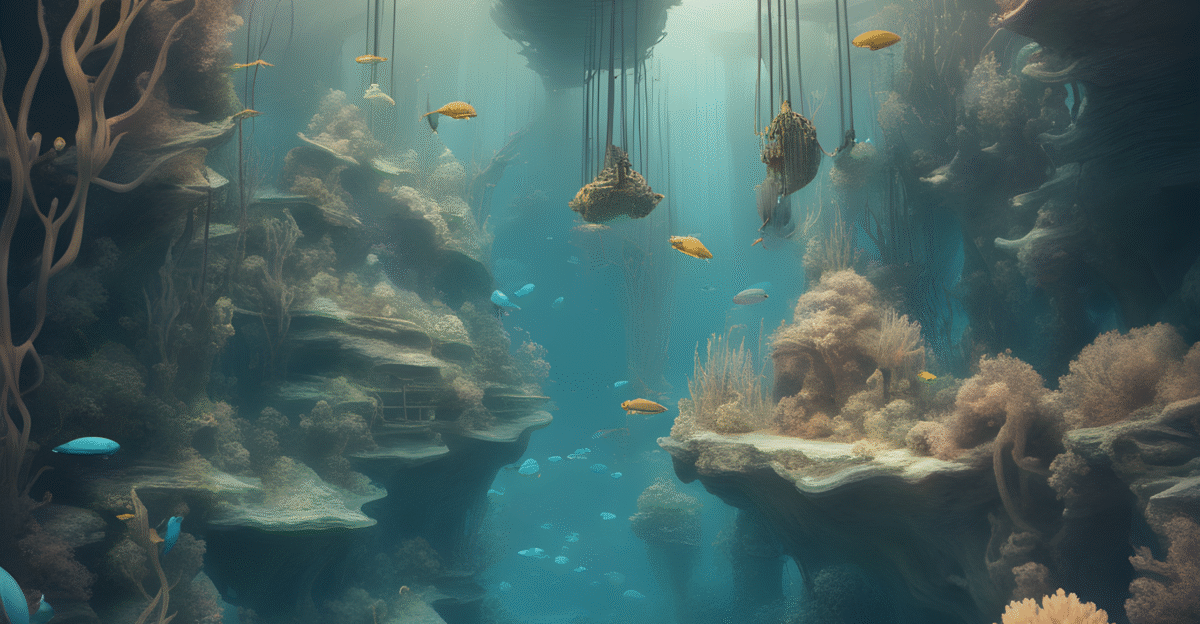
In many Mesoamerican beliefs, underground waters and rivers were seen as gateways to the afterlife, mystical pathways where souls travelled beyond the living world. The liquid mercury may have served as a powerful symbol, representing sacred rivers or spiritual passageways for the soul’s journey.
This could explain why it was carefully hidden in such a secret, protected chamber deep beneath the pyramid … a sacred portal to another realm, guarded for eternity.
One of History’s Biggest Mysteries
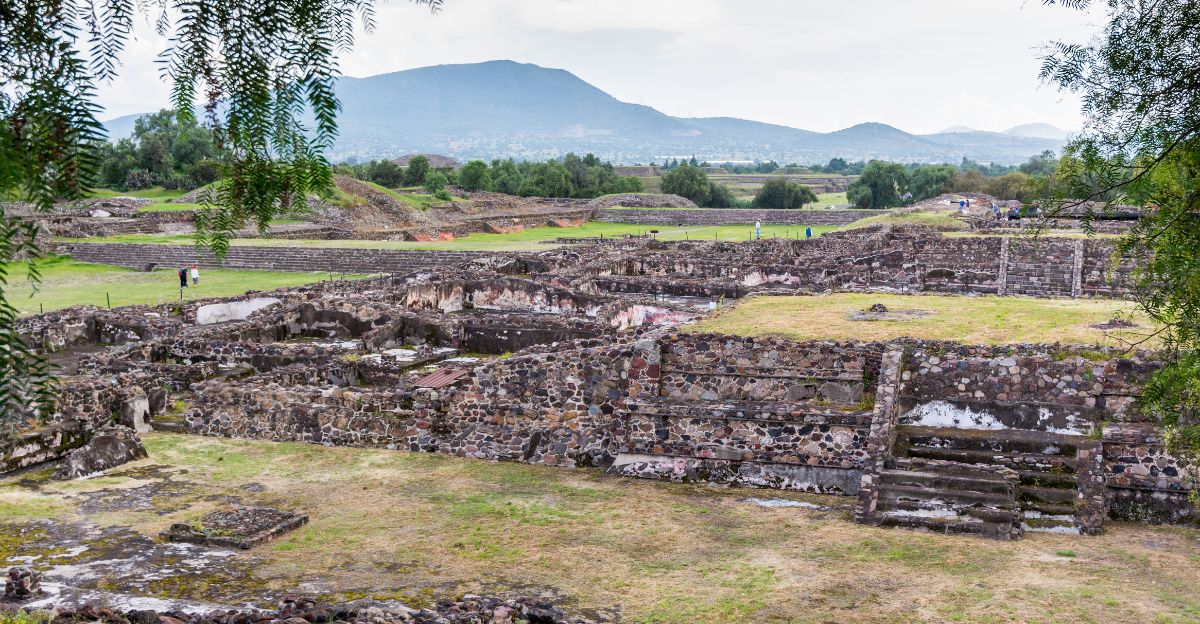
Though Teotihuacan was one of the largest and most powerful cities of its time, we still have no clear idea who ruled it or what language its people spoke. Unlike the Maya or Aztecs, Teotihuacan left behind no written records, no royal names, and no images of its leaders.
The identity of its rulers remains a complete mystery, and the chamber filled with mercury might be one of the few secret clues pointing toward the truth.
Mercury Wasn’t Just Found in Teotihuacan
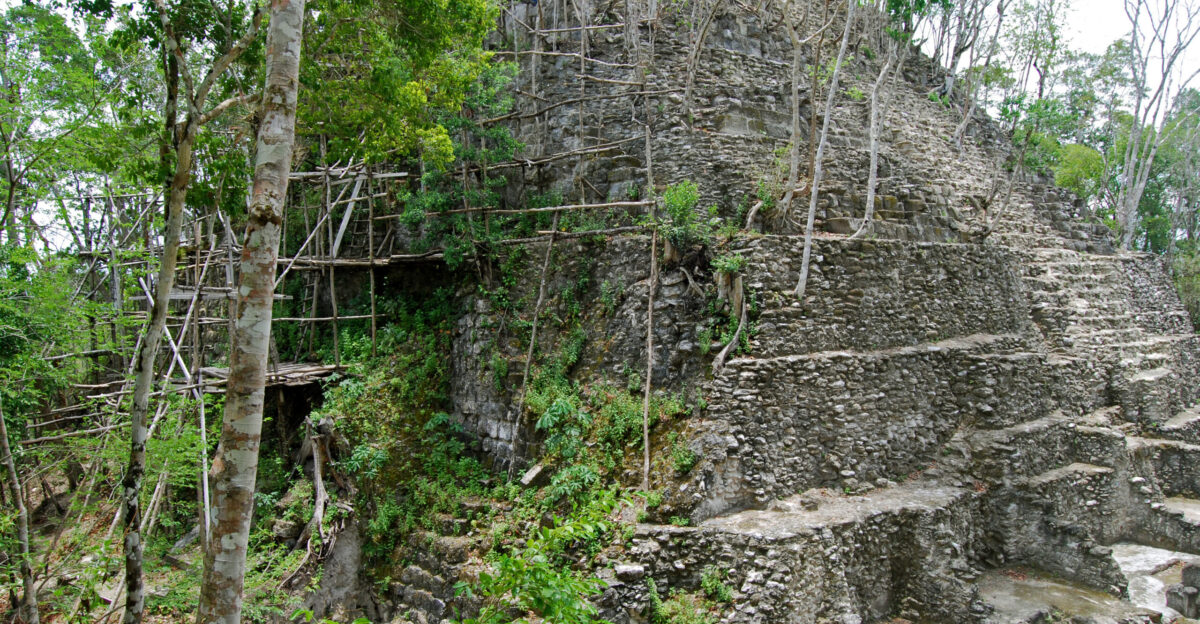
Interestingly, mercury hasn’t just been found beneath Teotihuacan. Archaeologists have uncovered it at other Mesoamerican sites like the sprawling Maya city of El Mirador. This hints that mercury wasn’t just a rare curiosity but likely played a significant role in spiritual and ritual practices across multiple ancient cultures in the region.
Could this toxic liquid have been a shared symbol of power, transformation, or connection to the divine? The mystery runs deeper than anyone imagined.
A Powerful Religious Center
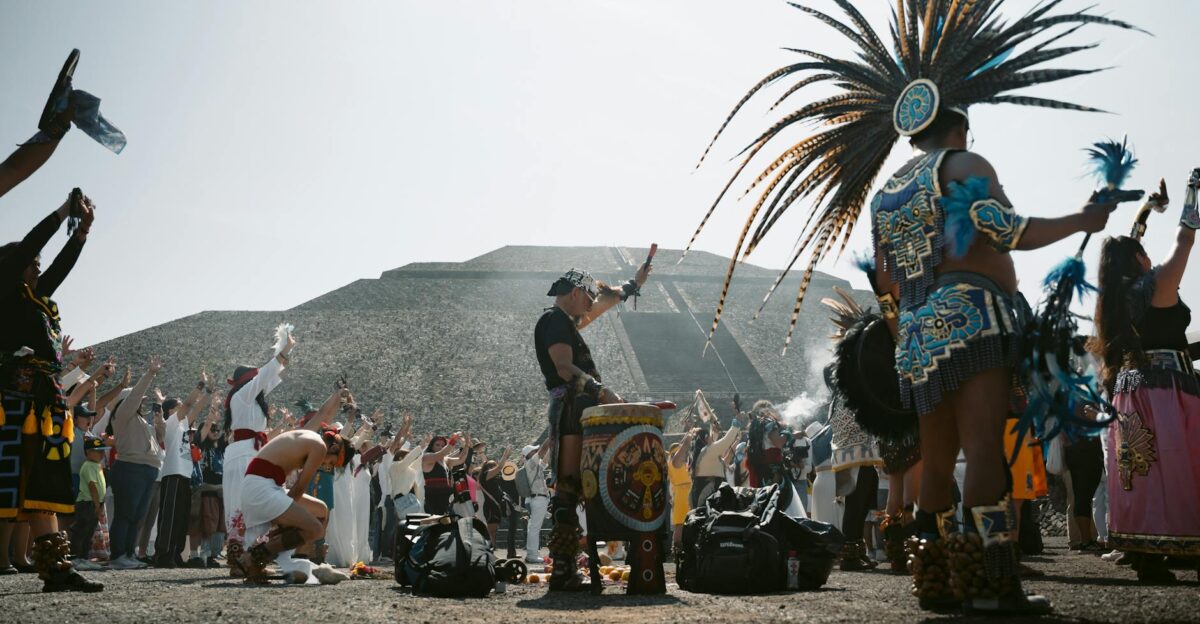
The Pyramid of the Feathered Serpent also known as the Temple of Quetzalcoatl, stood as one of the most sacred and powerful religious monuments in Teotihuacan. Its walls were adorned with intricate stone carvings of feathered serpents and other mythical beasts, symbols of gods and mighty forces beyond human understanding.
Whatever unfolded beneath this majestic structure was no accident or everyday event it was a deliberate act, steeped in profound spiritual meaning and ancient ritual. This was a place where the earthly and the divine collided.
A Doorway to the Unknown
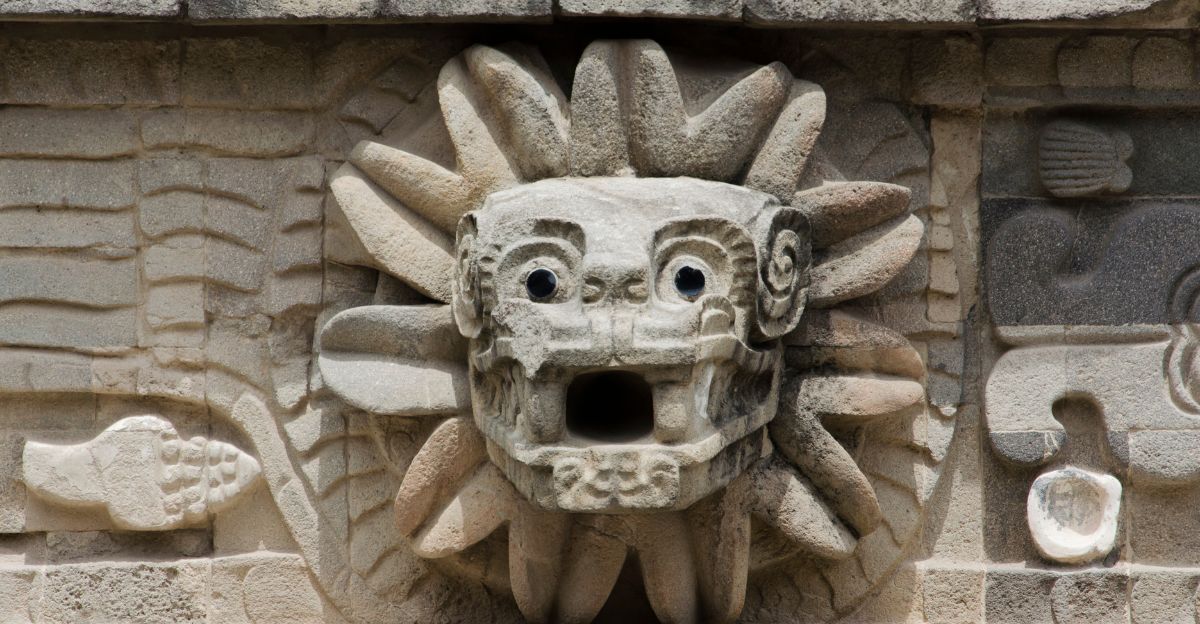
The discovery beneath the Pyramid of the Feathered Serpent is more than just an archaeological marvel; it’s a riddle carved in stone, sealed in darkness, and preserved by time. An unidentifiable liquid. A tunnel glittering like the cosmos. A city without a known ruler, without a written language, yet capable of astonishing feats of engineering and symbolism.


